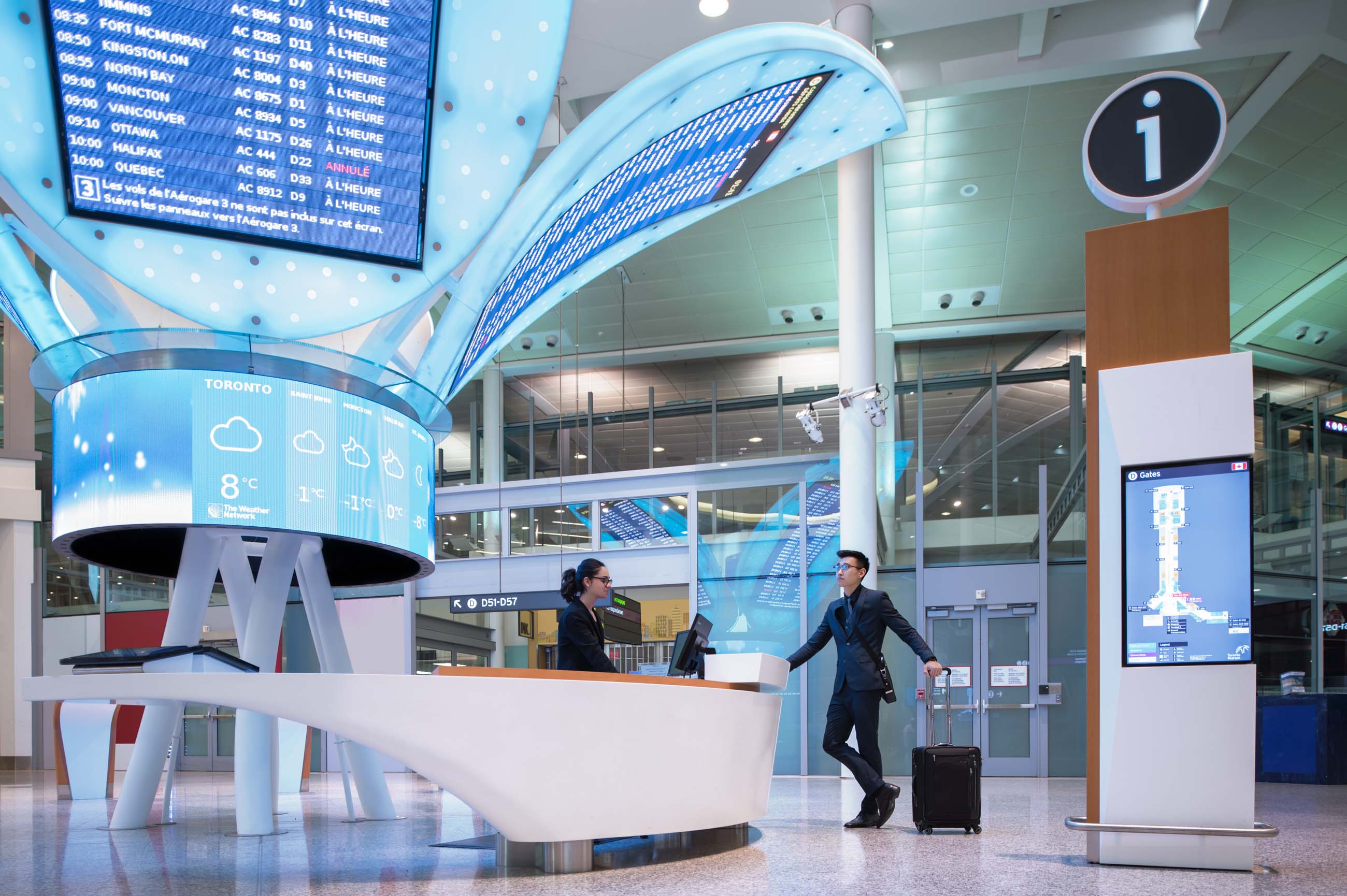It’s not just about the destination—it’s the journey. This is a phrase we hear often in everyday life, but it’s now being taken to heart in the world of transportation. Gone are the days of humdrum waiting rooms at airports and bus and train stations. Now, you’re entering a new world catering to a travelers’ every need, and transportation hubs are using AV to make it happen.
“To take advantage of the unique positions they hold in their local economies and cultures, modern transportation hubs must do more than simply move travelers from place to place,” said Joe’ Lloyd, vice president of global marketing, NanoLumens. “Often the first thing a traveler sees when they arrive in a new city, transportation hubs serve an important role in communicating and celebrating the culture of the region they service. To accomplish each of their varied goals, many of these locations are turning to adaptable AV technologies that can serve multiple purposes simultaneously.”

A smart terminal is the ultimate entrance to a smart city, and Nick Screen, Harman Professional’s director of transportation solutions, believes we are at a tipping point. “There is a lot of discussion with regards to ‘smart’ terminals and the seamless journey. There are already software and technologies being deployed that are enabling operators to take big steps to becoming ‘smart’ and to creating the seamless journey, which are providing both operational benefits and improving the customer experience.”
Visible but Not Overwhelming
One of the biggest challenges transportation hubs face is managing the user experience. Venues need to use AV to provide quick, easy access to information. How do integrators accomplish that without overwhelming weary travelers?
At any given point in time, passengers want to see “the status of their itinerary, the location of amenities, or an entertaining glimpse at local culture. How do you deliver so much information to such large and mobile audiences?” mused Lloyd.

As an answer to this question, Lloyd pointed to Terminal Four of New York City’s John F. Kennedy International Airport, through which one out of every 12 people entering the U.S. from an inbound foreign flight passes. “The importance of communicating varied information [to arriving passengers] quickly and clearly cannot be overstated,” she said.
The airport management team faced the issue of communication to the sheer volume of passengers, along with the location in the space—airport travelers aren’t known for having the patience to stand around looking for information. The team solved the problem with a double-sided, 30-foot by 10-foot NanoLumens LED display, which provides travelers with a host of information that can be seen “clearly from anywhere in the room.”
“This is how you refresh the passenger experience,” Lloyd said. “You use AV technologies to present the information that travelers need in a big, beautiful way, and then let them be on their way.”
The Road to Audio Success
Visual information is everywhere, but how many of you “speak conductor”? You know what we’re talking about—you’re on the subway platform and you hear an unintelligible announcement. If you’ve taken the subway long enough, you start to “speak conductor” and are able to actually understand the information being communicated. But we shouldn’t have to learn a foreign dialect just to get where we’re trying to go.

Harman’s Screen had a great analogy about this topic: “You wouldn’t send an email with half the words missing as it wouldn’t be a professional or effective means of communication,” he said. “So why should/would you accept a public address (PA) that cannot deliver a clear and understandable message?”
He claims there are three key aspects to speech intelligibility in transportation: direct-to-reverberant ratio; signal-to-noise ratio; and distortion from the PA system. If designers pay close attention to each of the factors above, they will be able to deliver a clear and understandable message to passengers, he said.
Another consideration Screen pointed out is that transportation PA systems are now being used for both public addresses and emergency announcements, which means venues have to comply with local regulations for emergency sound systems and/or voice alarm systems.
The Speech Transmission Index (STI) measures physical characteristics of a transmission channel and expresses the ability of the channel to carry across the characteristics of speech signal; the STI is measured numerically on a scale of zero to 1, with 0.75 to 1 being “excellent.” For most PA systems, according to Screen, “an STI of 0.5 with the maximum background noise present is required.”
One last thing to consider, Screen said, is the source of the message, as “paying attention to the small simple things can bring large benefits.” Screen suggested ensuring that staff is trained on how to use a microphone and how to pace speech to ensure that a message can be understood. If at all possible, he added, ensure that “pre-recorded announcements are professionally recorded and paced for the environment into which they will be delivered. If the reverberation time is high, then the speed of the speech needs to be lower.”
Paying close attention to all of the audio factors above, Screen said, will put you on the road to success. “Of course no one is ever going to run up to you in a train station and pat you on the back and say ‘Great announcement!” but you will get the satisfaction and reward when you see and hear the terminal operating and knowing that you have delivered intelligibility. And, more importantly, you will have a happy customer who will return to you again as they will recognize you as a subject matter expert who can add value to the operation of their terminal.”
Going Hack-Proof
Nobody wants a debacle like the May 2017 hacking of a large touchscreen display in Washington, DC’s Union Station, where visitors were exposed to more than three minutes of adult videos in the terminal during rush hour. Not only were passersby offended, but the screens remained off for several days while an investigation took place—frustrating travelers who lacked access to public service announcements, and getting in the way of valuable ad dollars for the operators. With so many AV systems relying on internet connections, what extra steps can integrators take to ensure their stuff is “hack proof”?
John Pescatore, director of emerging security trends at the SANS Institute, reminds professionals of the basics: ensuring information display systems are continuously updated and security controls are only accessible by authorized users. For sensitive systems, he cautioned, “authorized users should be required to use strong authentication, and not just reusable passwords.”
“Quite often, phishing attacks target system administrators and obtain their passwords—and the attackers are off to the races,” said Pescatore. “Strong authentication can be as simple as requiring receipt and entry of a text message in addition to a password, or require the use of a hardware token, like a USB key.”
With a combination of secure video, clear audio, and a carefully planned user experience, you can do your part to ensure a happy traveler’s journey.
5 Steps to Ensure Security
John Pescatore, director of emerging security trends at the SANS Institute provided fives steps to help ensure security with AV equipment.
- Always change the passwords on all video monitoring equipment and management software—never use the default password
- Choose video systems that support encrypted communications between cameras and servers, as well as support for strong authentication for administrative access.
- Ensure manufacturers have a documented process for providing software updates, and make sure you have a process for rapidly installing the updates; generally, these should be installed in one week or less.
- Do not directly connect camera systems to the internet or to network segments that are directly connected to the internet.
- Keep all cameras and servers on an isolated network segment that uses a firewall to provide only the minimum access and that logs all connections.
